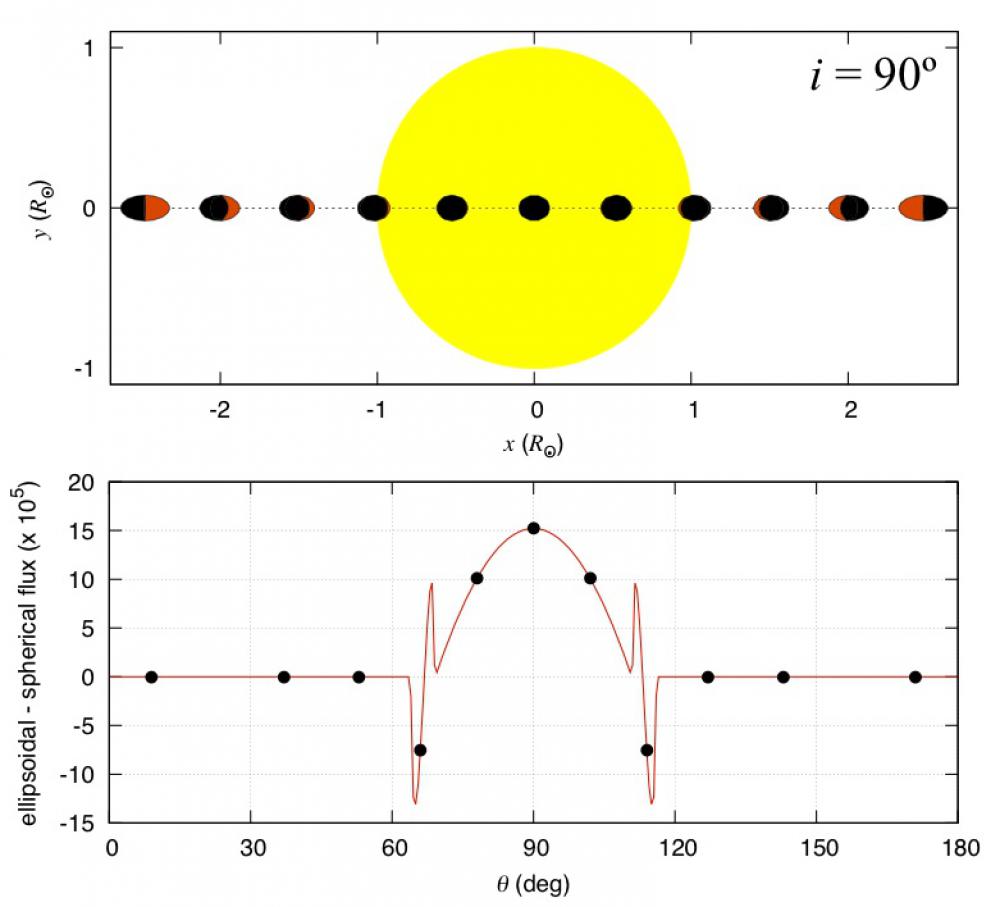Planets orbiting very close to their host stars have been found, some of them on the verge of tidal disruption. The ellipsoidal shape of these planets can significantly differ from a sphere, which modifies the transit light curves. In a recent A&A Letter, Gr@v researchers present an easy method for taking the effect of the tidal bulge into account in the transit photometric observations. It is shown that the differences in the light curve are greater than previously thought. When detectable, these differences provide an estimation of the fluid Love number, which is invaluable information on the internal structure of close-in planets.
About half of the more than 1000 known transiting exoplanets have orbital periods less than ten days. These close-in planets undergo strong tidal effects raised by the parent star. One consequence is that their spins and orbits evolve until an equilibrium configuration is reached, corresponding to coplanarity, circularity, and synchronous rotation. Another consequence is that the shape of these planets differ from a spherical body, and it is approximated better by a triaxial ellipsoid. The asymmetry in the mass distribution increases with the proximity to the star, and it is particularly pronounced near the Roche limit.
For simplicity, most observational works on transiting planets assume that its shape is spherical, so they determine an average radius. However, if there is enough precision in the data, it is possible to spot the polar oblateness signature in the transit light curve, which gives us invaluable information on their internal structure. Previous studies have ignored the equatorial prolateness, which is actually more pronounced than the polar oblateness, since the long axis always points to the star, and thus should not be perceptible during the transit. Since a large number of transiting planets are being detected on the verge of tidal disruption, it is important to understand the exact contribution of its shape to the photometric observations.
Obtaining observational constraints on the internal structure of exoplanets is extremely challenging because it requires a measurement of the planet's shape or relies on rare dynamical configurations in multiple planet systems. This paper shows that for exoplanets very close to their parent star, that are tidally deformed by the star, affects the lightcurves not just at ingress and egress but during the entire transit events. The signal may be within reach of future or even present space-based photometric. Such a determination would yield a measurement of the Love number h2 and could potentially help determine whether giant exoplanets have dense cores.
This paper has been selected for A&A Highlights.
